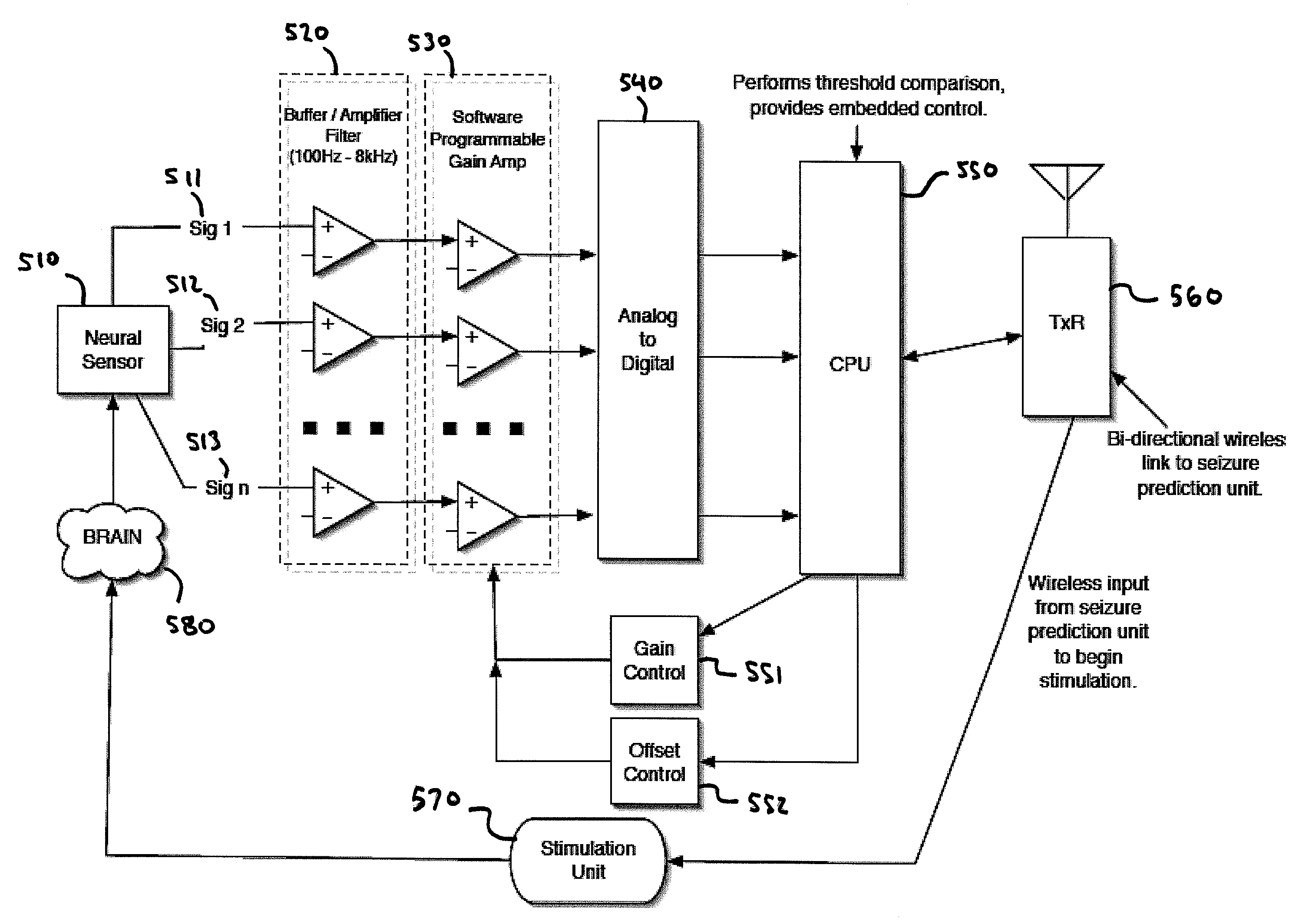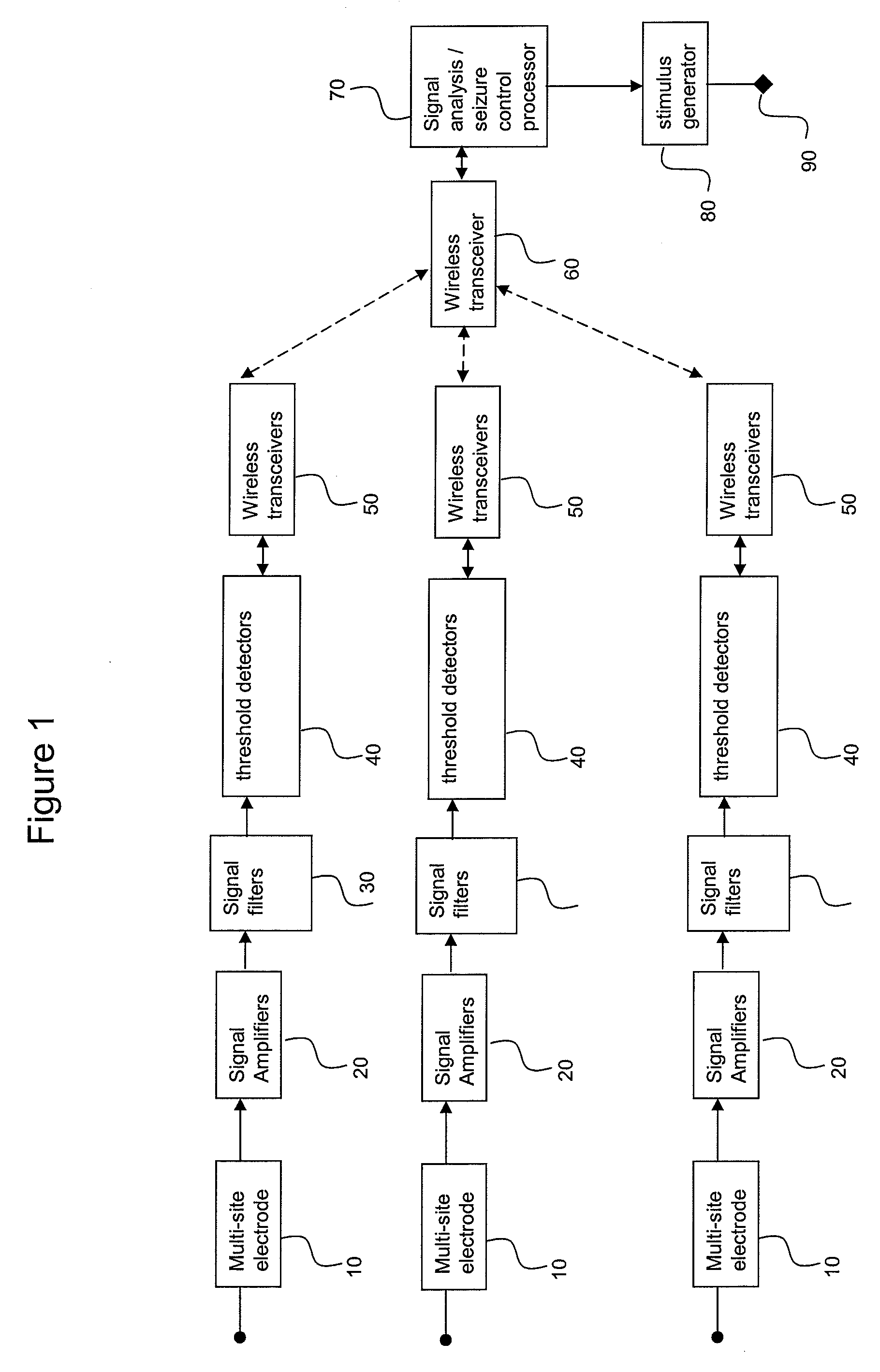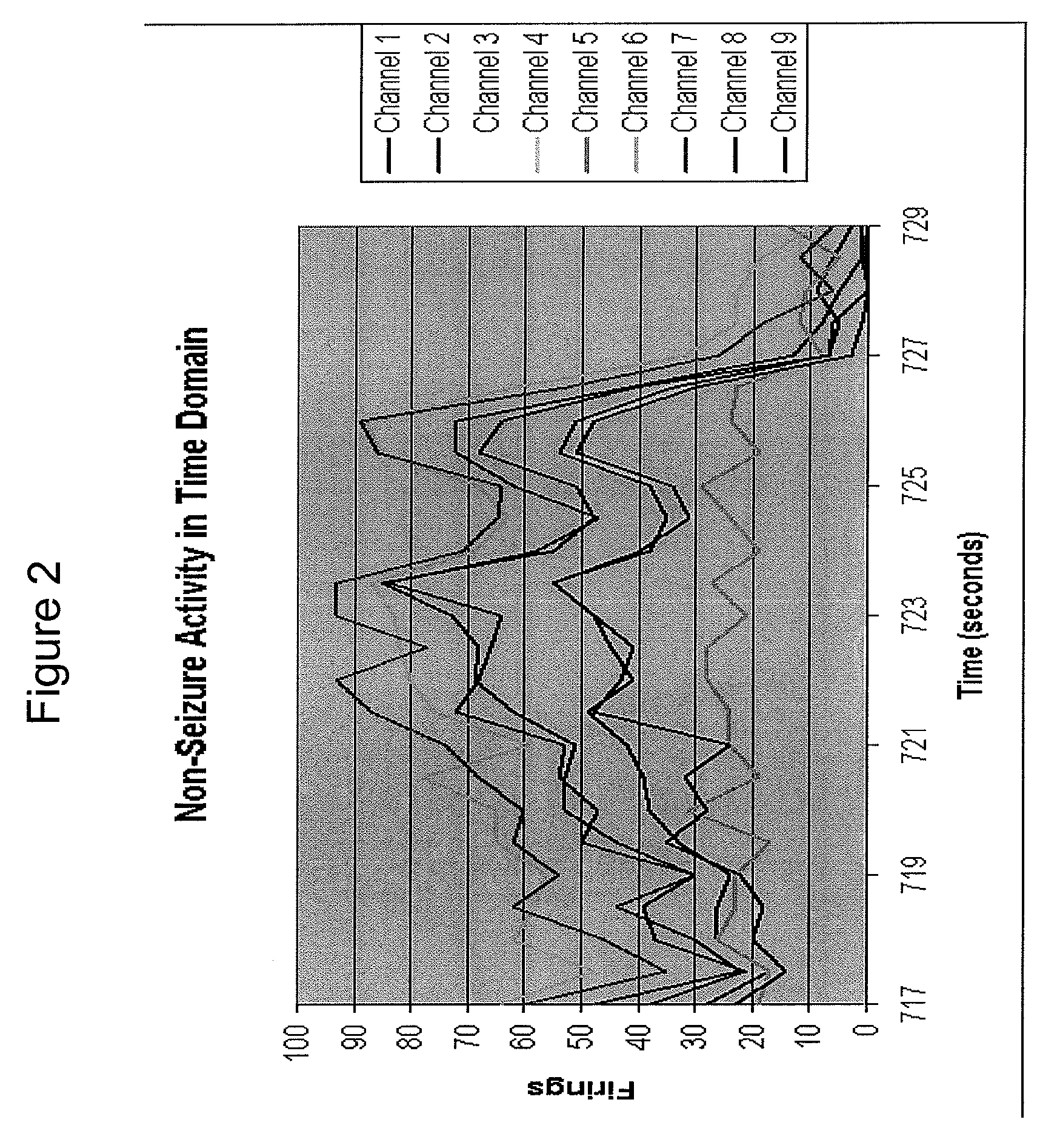Wireless controlled neuromodulation system
a neuromodulation system and wireless technology, applied in the field of wireless controlled neuromodulation system, can solve the problems of reducing overall costs, affecting the overall burden of the u.s. health care system, and affecting the ability of patients to respond to pain, so as to prevent seizures and detect epileptic seizures.
- Summary
- Abstract
- Description
- Claims
- Application Information
AI Technical Summary
Benefits of technology
Problems solved by technology
Method used
Image
Examples
Embodiment Construction
Of THE INVENTION
[0020] Referring now to various figures of the drawings wherein like reference characters refer to like parts, there is shown in FIG. 1, a block diagram of an exemplary embodiment of an apparatus for detection and control of epileptic seizures.
[0021] Microelectrodes 10 are inserted in the brain of a human or animal to sense neural activity at a plurality of sites. In an exemplary embodiment, multiple microelectrodes are combined on ceramic based multi-site electrodes such as those described in U.S. Pat. No. 6,834,200 (Moxon et. al) Ceramic Based Multi-site Electrode Arrays and Methods for Their Production. Each of the microelectrodes is connected to a signal amplifier 20, one for each electrode site. One skilled in the art will recognize that the gain and input impedance of the signal amplifier should be suitable for the voltage generated by the microelectrode 10 when receiving a neural signal. An exemplary signal amplifier is disclosed in provisional application No...
PUM
 Login to View More
Login to View More Abstract
Description
Claims
Application Information
 Login to View More
Login to View More - R&D
- Intellectual Property
- Life Sciences
- Materials
- Tech Scout
- Unparalleled Data Quality
- Higher Quality Content
- 60% Fewer Hallucinations
Browse by: Latest US Patents, China's latest patents, Technical Efficacy Thesaurus, Application Domain, Technology Topic, Popular Technical Reports.
© 2025 PatSnap. All rights reserved.Legal|Privacy policy|Modern Slavery Act Transparency Statement|Sitemap|About US| Contact US: help@patsnap.com



